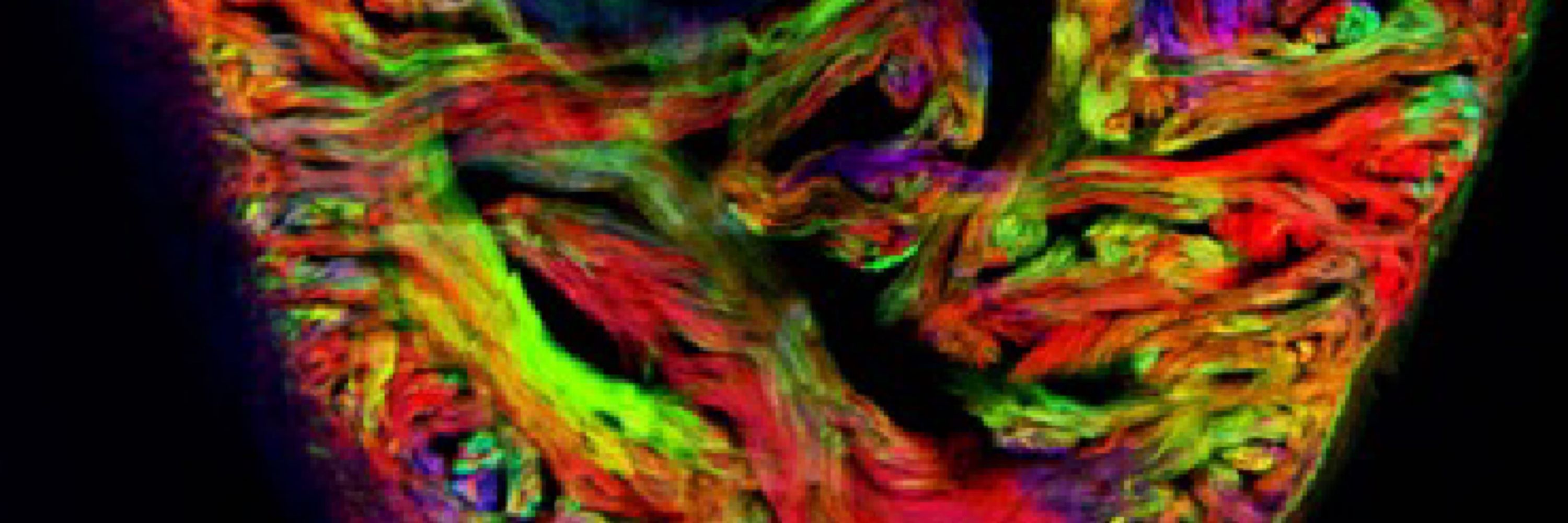
Jeroen Bakkers
@bakkerslab.bsky.social
We study cardiac development, disease and regeneration and are located at the Hubrecht Institute in The Netherlands
Join this exciting meeting on Regenerative Biology with a great speaker lineup !
June 11, 2025 at 11:32 AM
Join this exciting meeting on Regenerative Biology with a great speaker lineup !
Thank you Filipa!
January 8, 2025 at 7:12 AM
Thank you Filipa!
I can only agree!
January 4, 2025 at 12:51 PM
I can only agree!
👉 Our findings suggest a new model: Hmga1 reactivates silenced developmental genes by clearing repressive chromatin marks. This "pro-regenerative gene program" drives cardiomyocyte proliferation, enabling heart regeneration.
January 3, 2025 at 9:56 AM
👉 Our findings suggest a new model: Hmga1 reactivates silenced developmental genes by clearing repressive chromatin marks. This "pro-regenerative gene program" drives cardiomyocyte proliferation, enabling heart regeneration.
🔬 We also compared Hmga1’s effects on zebrafish and mouse hearts. Both species showed reduced H3K27me3 marks on developmental genes after Hmga1 overexpression, confirming that the regenerative mechanism is conserved across species.
January 3, 2025 at 9:56 AM
🔬 We also compared Hmga1’s effects on zebrafish and mouse hearts. Both species showed reduced H3K27me3 marks on developmental genes after Hmga1 overexpression, confirming that the regenerative mechanism is conserved across species.
🧪 Importantly, Hmga1 only stimulates cardiomyocyte proliferation in the context of injury. Sham-operated mice with Hmga1 therapy showed no abnormal cell growth. This highlights its potential as a safe and targeted treatment.
January 3, 2025 at 9:56 AM
🧪 Importantly, Hmga1 only stimulates cardiomyocyte proliferation in the context of injury. Sham-operated mice with Hmga1 therapy showed no abnormal cell growth. This highlights its potential as a safe and targeted treatment.
🐁 In mouse models, we delivered Hmga1 directly to injured hearts using a viral gene therapy. The results? Controlled cardiomyocyte proliferation in the injury border zone, improved heart function, and no harmful side effects like heart enlargement.
January 3, 2025 at 9:56 AM
🐁 In mouse models, we delivered Hmga1 directly to injured hearts using a viral gene therapy. The results? Controlled cardiomyocyte proliferation in the injury border zone, improved heart function, and no harmful side effects like heart enlargement.
🐟 In zebrafish, Hmga1 is essential for heart regeneration. Without it, cardiomyocyte proliferation is diminished, and the heart cannot recover. When overexpressed, Hmga1 reactivates developmental gene programs.
January 3, 2025 at 9:56 AM
🐟 In zebrafish, Hmga1 is essential for heart regeneration. Without it, cardiomyocyte proliferation is diminished, and the heart cannot recover. When overexpressed, Hmga1 reactivates developmental gene programs.
🧬 Hmga1 works by clearing "roadblocks" in the form of repressive chromatin marks (H3K27me3). These marks keep genes silenced after development. By removing them, Hmga1 reactivates genes needed for cardiomyocyte proliferation and heart repair.
January 3, 2025 at 9:56 AM
🧬 Hmga1 works by clearing "roadblocks" in the form of repressive chromatin marks (H3K27me3). These marks keep genes silenced after development. By removing them, Hmga1 reactivates genes needed for cardiomyocyte proliferation and heart repair.
🐟Zebrafish can regenerate their hearts after injury and reactivate dormant embryonic genes in cardiomyocytes. By comparing injury responses in zebrafish and mouse models and using a spatial transcriptomics approach, we identified Hmga1 as a key factor enabling this regeneration.
January 3, 2025 at 9:56 AM
🐟Zebrafish can regenerate their hearts after injury and reactivate dormant embryonic genes in cardiomyocytes. By comparing injury responses in zebrafish and mouse models and using a spatial transcriptomics approach, we identified Hmga1 as a key factor enabling this regeneration.

